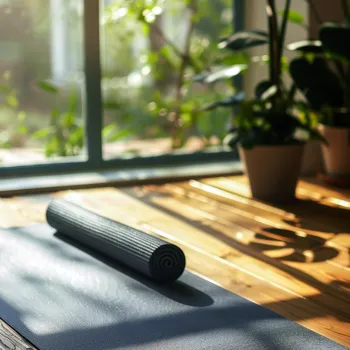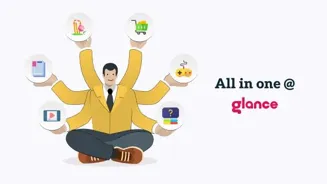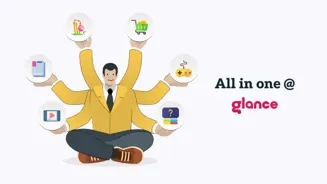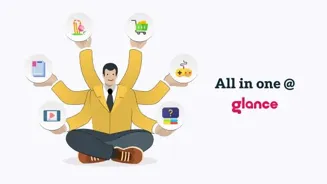Discover the power of mindfulness at work with 10 techniques to boost productivity and well-being. Dive in for a mindful transformation!
In today's fast-paced Indian workplace, where deadlines loom like
dark clouds and stress levels soar faster than the Sensex, a new mantra is gaining traction: mindfulness. Forget chanting "Om" in a Himalayan cave (unless that's your thing, then by all means!

), we're talking about bringing a sense of calm awareness into your everyday work life. It's about being present, focused, and less reactive to the chaos that surrounds us. Think of it as pressing the pause button on your internal drama queen or king.
Mindfulness isn't some airy-fairy, touchy-feely concept. It's a practical approach to improving your mental well-being and boosting your productivity. Studies have shown that mindfulness can reduce stress, improve focus, enhance creativity, and even build better relationships with your colleagues.
And let's be honest, who wouldn't want a little bit of that in their office? The good news is, you don't need hours of meditation to reap the benefits. Simple, everyday techniques can make a big difference.
So, grab your chai, settle in, and let's explore these techniques that will help you transform your workplace from a pressure cooker to a peaceful haven.
Mindful Breathing: Your Pocket-Sized Stress Buster
This is the cornerstone of mindfulness, and thankfully, it's incredibly simple. Basically, all you need to do is pay attention to your breath.
Find a comfortable position, close your eyes (if you're comfortable doing so, otherwise just soften your gaze), and notice the sensation of your breath entering and leaving your body. Feel the rise and fall of your chest or abdomen. When your mind wanders (and it will, that's its job!
), gently guide it back to your breath. Even a few minutes of mindful breathing can calm your nerves and sharpen your focus. Try it before a stressful meeting, during a frustrating project, or anytime you feel overwhelmed.
You can practice this anywhere – on the commute, at your desk, or even in the lift. There are also many apps available with guided meditations that can help you get started with mindful breathing. The key is consistency.
A few minutes of practice each day is far more effective than sporadic bursts of intense meditation. And remember, there's no right or wrong way to breathe, just notice the breath as it comes and goes.
Body Scan Meditation: Tuning Into Your Inner Self
Our bodies often hold stress and tension that we're not even aware of. The body scan meditation helps you become more aware of these sensations and release them.
Lie down or sit comfortably and bring your attention to different parts of your body, starting with your toes and moving upwards towards the head. Notice any sensations you feel – tingling, warmth, tightness, or pressure. There’s no need to judge or change them, simply observe.
If you find an area of tension, gently breathe into it, imagining the breath softening and releasing the tightness. Think of it as giving your body a mental hug. This practice can help you identify areas of stress and tension, allowing you to address them before they escalate into bigger problems.
It's like a mental massage for your body, releasing knots and promoting relaxation. Again, guided meditations are available online and through apps. Experiment with different lengths of time and find what works best for you. Even a five-minute body scan can leave you feeling refreshed and grounded.
Try it during your lunch break or after a long day at your desk.
Mindful Walking: Stepping Into the Present Moment
Instead of rushing from one meeting to another or mindlessly scrolling through your phone during your lunch break, try mindful walking. This involves paying attention to the sensation of your feet making contact with the ground.

Notice the feeling of each step, the shifting of your weight, and the movement of your body. Pay attention to your surroundings – the colours, the sounds, the smells. Engage all your senses. Let go of thoughts about the past or future and simply focus on the present moment.
This is a great way to clear your head, reduce stress, and get some exercise at the same time. Even a short walk around the office or a stroll in a nearby park can make a big difference. Leave your phone in your pocket, disconnect from your screens, and tune into the world around you.
Mindful walking is about transforming an ordinary activity into an opportunity to cultivate presence and awareness. It's a chance to break free from the mental chatter and reconnect with your physical body and the environment you're in.
Mindful Listening: Really Hear What Others Are Saying
In the workplace, communication is key, but how often do we truly listen to each other? Mindful listening involves paying full attention to the speaker, without interrupting, judging, or planning your response. Put away your phone, make eye contact, and focus on understanding their perspective.

Notice their tone of voice, their body language, and the emotions behind their words. Ask clarifying questions if needed, but resist the urge to interrupt or offer unsolicited advice. When your mind wanders, gently bring it back to the speaker.
Mindful listening can improve your relationships with your colleagues, reduce misunderstandings, and foster a more collaborative work environment. It's about creating a space where everyone feels heard and valued.
In a world dominated by noise and distractions, the skill of mindful listening is more important than ever.
Single-Tasking: The Art of Doing One Thing at a Time
We live in a culture that glorifies multitasking, but research shows that it actually reduces productivity and increases stress. Instead of trying to juggle multiple tasks at once, try single-tasking. Focus all your attention on one task at a time, giving it your full concentration.

Eliminate distractions such as emails, social media notifications, and noisy colleagues. Break down large tasks into smaller, more manageable steps. When you finish one task, take a short break before moving on to the next.
Single-tasking can improve your focus, reduce errors, and increase your efficiency. It allows you to do better work and feel less overwhelmed. It's about reclaiming your attention and choosing to be present in the moment, rather than being pulled in a million different directions.
Creating designated work zones can also help with productivity.
Mindful Emailing: Responding with Intention
How many times do you fire off emails without really thinking about what you're saying or how it might be received? Mindful emailing involves taking a moment to pause before responding to an email.
Read the email carefully, paying attention to the sender's tone and the message they're trying to convey. Consider your response thoughtfully, choosing your words carefully and avoiding emotional reactions. Be clear, concise, and respectful in your communication.
Before hitting send, take a moment to review your email and ensure that it conveys your message effectively. Mindful emailing can reduce misunderstandings, improve communication, and foster more positive relationships with your colleagues and clients.
It's about taking responsibility for your words and ensuring that they contribute to a more productive and respectful work environment.
Gratitude Practice: Counting Your Blessings at Work
It's easy to get caught up in the challenges and frustrations of work, but taking time to appreciate the good things can boost your mood and resilience.
Practicing gratitude involves consciously focusing on the things you're grateful for at work – supportive colleagues, interesting projects, opportunities for growth, or even just a comfortable chair.
Keep a gratitude journal and write down three things you're grateful for each day, or simply take a moment to reflect on the positive aspects of your work. Expressing gratitude to your colleagues can also strengthen relationships and create a more positive work environment.
Gratitude practice shifts your focus from what you lack to what you have, fostering a sense of contentment and appreciation.
Observe your thoughts: Become the Aware Observer
The world is full of information, and many times our mind wanders around with the information. During times when you want to focus on your work, you must observe your thoughts. This way you understand what you are actually thinking about, and let go when unwanted.
Accept and Non-Judgement:
The world is full of acceptance, people are trying to accept things which are not as per their expectations. This is important in workplaces. You should accept different people, and their behavior which is not hurting anyone.

Loving-Kindness Meditation: Cultivating Compassion
This practice involves extending feelings of love, kindness, and compassion towards yourself and others. Start by focusing on yourself, wishing yourself well-being, happiness, and peace. Then, extend these feelings to your loved ones, your colleagues, and even those you find challenging.
Visualize each person and silently repeat phrases such as, "May you be happy. May you be healthy. May you be safe. May you be at peace." Loving-kindness meditation can improve your relationships, reduce negativity, and foster a more compassionate work environment.
So, there you have it – ten simple yet powerful mindfulness techniques that you can incorporate into your workday. Remember, mindfulness is not about eliminating stress altogether, but about learning to respond to it in a more skillful and adaptive way.
It's about cultivating awareness, presence, and compassion, both for yourself and for others. By incorporating these practices into your daily routine, you can transform your workplace into a calmer, more focused, and more fulfilling environment. Go ahead, give it a try.
Your mind (and your colleagues) will thank you for it.
AI Generated Content. Glance/InMobi shall have no liability for the content









